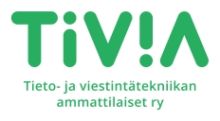5 steps to getting your organization started with generative AI

Generative artificial intelligence is rapidly gaining ground. When utilized responsibly, it has the potential to revolutionize businesses. However, generative AI still has its faults, and if not implemented correctly, it could lead to unwanted outcomes. Take a look at Qvik's guide to getting your organization started with gen AI – the successful way.
Artificial intelligence (AI) is the part of computer science that creates intelligent machines. Academically, it was established in 1956. AI’s most common everyday applications today include online stores’ and entertainment apps’ recommendation systems, search engines, and voice-directed assistants, such as Siri and Alexa.
After Google developed the transformer technology in 2017, generative AI has steadily gained ground in multiple industries. Generative AI is capable of learning and thus producing prompt-based text and images of rapidly improving quality.
With generative AI-based productivity tools such as ChatGPT and Midjourney, companies have started to ponder the technology’s future effects on their business.
In the realm of digital products and services, generative AI is currently causing a shift in interaction design. “Intentfaces” are replacing traditional interfaces, making natural language the primary mode of exchange with digital products. This replaces the need for conventional methods that rely on buttons, filters, and machine-optimized search processes.
In the future, designing user experiences will increasingly focus on seamlessly matching user intent. The ongoing evolution has the potential to make our interaction with technology more natural, resembling our everyday communication and relations.
How to successfully integrate generative AI into your business
Successfully adopting AI across your organization has multiple benefits. According to AI Bootcamp, an AI-ready culture enhances performance, accelerates innovation, and asserts advantage with data-driven decision-making. Yet, adopting AI as part of your existing organization is not something you should approach lightly.
Here is a list of recommended first steps for your organization in embracing the possibilities provided by generative AI. These steps highlight responsibility, transparency, leadership, and a systematic approach.
1. Get educated and find motivation
Before you make your AI debut, it pays off to do some research. Read books and articles, take courses, and try it out. You must be trained to use the current versions of generative AI responsibly. Finding personal motivation will also help you maintain your AI understanding – in rapidly developing technology, best practices change weekly.
2. Focus on real problems and start small
When you’re getting familiar with generative AI, it’s tempting to start thinking that it will solve all your problems. AI has flaws, so we guarantee that rushing into anything will only make your business suffer. Instead of employing AI to do all possible tasks, find minor problems that AI could solve and do internal testing before implementing it in customer-facing projects. Realistic use cases will yield successful outcomes and help your team hone their skills. Only once you master simple tasks can you start experimenting with augmenting human abilities.
3. Find the right tools, platforms, and partners
The internet is flooded with AI-based apps, tools, and platforms of variable quality. These tools have in common that most of them come with associated costs. Knowing the problems you’ll try to solve with generative AI will make gathering your toolbox much easier. In the beginning, you should also rely on a trusted partner to guide you through opportunities and build a realistic AI roadmap for your company.
4. Create an AI-ready culture
The AI Bootcamp defines an AI-ready culture as one where:
- Employees embrace AI as an opportunity rather than a threat
- There’s a willingness to incorporate AI across business functions
- People are comfortable collaborating with AI systems as partners
- The focus is on augmenting, rather than replacing, human abilities
- Data-driven executive decisions and workflows exist
To create an AI-ready culture, be transparent about your AI vision and strategy. Provide training and learning opportunities, develop dedicated roles for AI, incentivize finding use cases for the new technology, and stay in touch by surveying your employees. Speaking about AI publicly and creating frameworks and policies for its use lets your employees and customers know what you’re doing. Businesses communicating boundaries and guidelines for AI use will avoid unethical use, lapsed security, and mangled processes.
5. Learn prompt engineering
Prompt engineering is the basis for almost any kind of tool in the productivity space – hence, it’s a valuable skill for any professional in the future workforce. Prompts are the essence of generative AI and give your tool the context, goals, and background to create what you’re asking for. Have you ever made your AI ask you questions about the problem you’re trying to solve? What type of expert roles have you given your AI? The more you learn about prompts, the better the results you’ll get.
Generative AI bias highlights the importance of a systematic approach
AI is developed and trained by humans, so it reflects our biases. For example, images containing people created by AI often include only beautiful individuals – since human users prefer them. Inclinations like this eventually lead to diminished diversity and representation.
Some choices the AI makes are also impossible to understand. AI-generated images can be creepy or make no sense, with little known understanding of why this happens. Unexpected or unreasonable outcomes are common.
Although using AI will train it further, human bias is impossible to completely eliminate, so it’s important to have educated guidelines on using the tools. Generative AI has great promise, but it’s not a silver bullet.
A Practical Guide to Generative AI in Design, by Qvik – Generative AI is a game-changer for designers, making workflows smoother, enhancing creativity, and transforming how we connect with people. Qvik offers a hands-on POC (Proof of Concept) to explore generative AI tools. The POC is designed to be a chance to experience the difference these tools can make for you. Let’s envision a future where efficient design helps us overcome challenges and open new frontiers. Let’s explore the opportunities provided by the AI technology together!
Sources
Juha Falck: AI and human re-evolution
(Keynote presentation at Qvik’s event: GEN AI Revolution: Transforming digital interaction on February 29, 2024)
Jaana Hautala: Own your AI content: detecting bias in gen AI for responsible use
(Keynote presentation at Qvik’s event: GEN AI Revolution: Transforming digital interaction on February 29, 2024)
Joni Juup: GenAI-driven paradigm shift in UX
(Keynote presentation at Qvik’s event: GEN AI Revolution: Transforming digital interaction on February 29, 2024)
Generative Artificial Intelligence
AUTHOR:
Juha Falck
Sales Executive
Qvik






















































